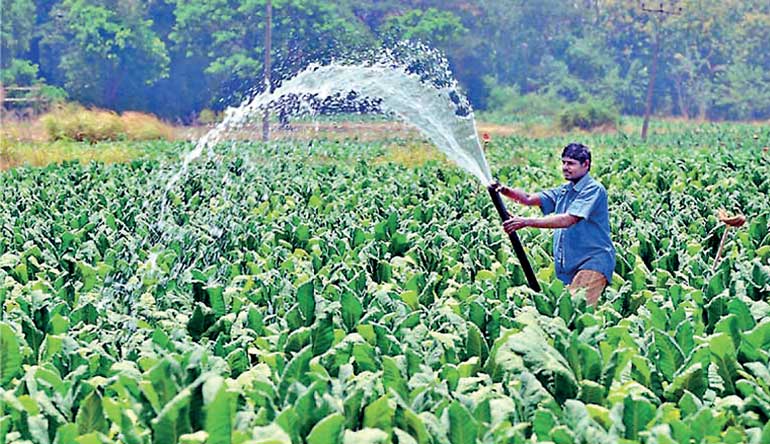Saturday Mar 15, 2025
Saturday Mar 15, 2025
Friday, 27 January 2017 00:00 - - {{hitsCtrl.values.hits}}
 The Tobacco Atlas 2015 edition records that Sri Lanka produced 6,000 metric tons of tobacco out of which 2,374 metric tons of tobacco leaf and 400 million cigarette sticks were exported. To meet the industry demand 3,825 metric tons of tobacco leaf and 50 million cigarette sticks were imported to Sri Lanka
The Tobacco Atlas 2015 edition records that Sri Lanka produced 6,000 metric tons of tobacco out of which 2,374 metric tons of tobacco leaf and 400 million cigarette sticks were exported. To meet the industry demand 3,825 metric tons of tobacco leaf and 50 million cigarette sticks were imported to Sri Lanka
The world is laying out policies and actions to ban tobacco use by 2020, but the acute smoker is finding new ways to fulfil their habit.
The Tobacco Atlas 2015 edition records that Sri Lanka produced 6,000 metric tons of tobacco out of which 2,374 metric tons of tobacco leaf and 400 million cigarette sticks were exported. To meet the industry demand 3,825 metric tons of tobacco leaf and 50 million cigarette sticks were imported to Sri Lanka.1
Recent incidents of attempts to smuggle large stocks of duty free and contraband cigarettes reflects that desperate measures are taken by individuals or groups to get hold of cheaper and better quality cigarettes for consumption.
While the consumer seeks alternative means of purchasing more cigarette sticks, legislators are now looking to permanently curb tobacco product circulation around the world. The introduction of banning Tobacco leaf exports have been tabled for discussions at Framework Convention on Tobacco Control (FCTC) headed conventions at several occasions.
This will affect the tobacco growers and decapitate the economies of many African and Asian countries. Which is why the International Tobacco Growers Association (ITGA)2 appeals the conventions to protect the status of tobacco exports in the international trading system; “growers are concerned about the efforts in FCTC to change the way tobacco is treated in international trading. Tobacco producing countries need to retain the benefits of exports.”
To give perspective in a local sense on exports from Sri Lanka to the world, UN comtrade database indicated a trade value of$89,624,561 for tobacco and manufactured tobacco substitutes in 2015. Whereas a trade value of $86,990,007 were recorded for imports on the same commodity.3
The next three years would see a colossal effect on the trade and economic indicators as the government enforces stringent measures to ban the use of tobacco for consumption and trade.
Footnotes
1.Tobacco Atlas 2015
2.http://www.tobaccoleaf.org/
3.https://comtrade.un.org/db/
Discover Kapruka, the leading online shopping platform in Sri Lanka, where you can conveniently send Gifts and Flowers to your loved ones for any event including Valentine ’s Day. Explore a wide range of popular Shopping Categories on Kapruka, including Toys, Groceries, Electronics, Birthday Cakes, Fruits, Chocolates, Flower Bouquets, Clothing, Watches, Lingerie, Gift Sets and Jewellery. Also if you’re interested in selling with Kapruka, Partner Central by Kapruka is the best solution to start with. Moreover, through Kapruka Global Shop, you can also enjoy the convenience of purchasing products from renowned platforms like Amazon and eBay and have them delivered to Sri Lanka.
Discover Kapruka, the leading online shopping platform in Sri Lanka, where you can conveniently send Gifts and Flowers to your loved ones for any event including Valentine ’s Day. Explore a wide range of popular Shopping Categories on Kapruka, including Toys, Groceries, Electronics, Birthday Cakes, Fruits, Chocolates, Flower Bouquets, Clothing, Watches, Lingerie, Gift Sets and Jewellery. Also if you’re interested in selling with Kapruka, Partner Central by Kapruka is the best solution to start with. Moreover, through Kapruka Global Shop, you can also enjoy the convenience of purchasing products from renowned platforms like Amazon and eBay and have them delivered to Sri Lanka.